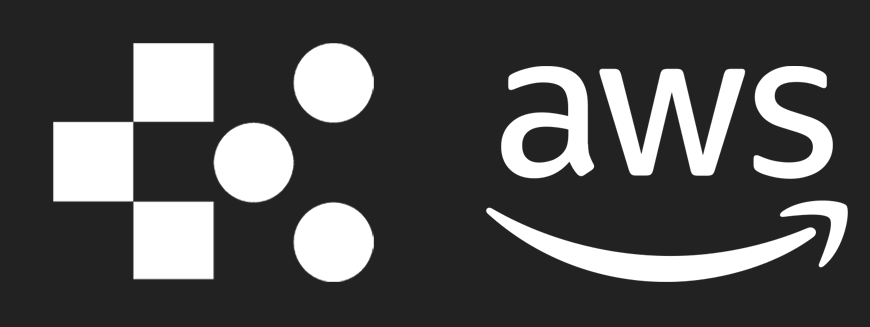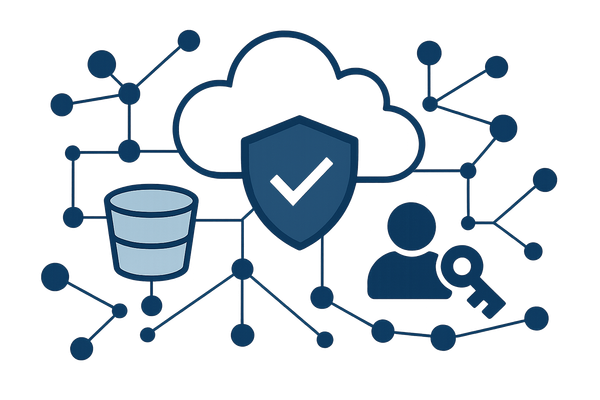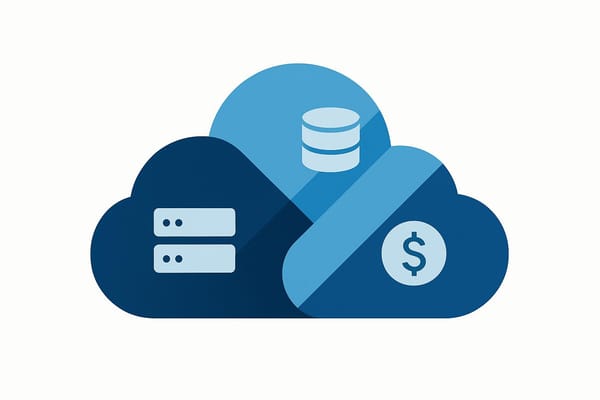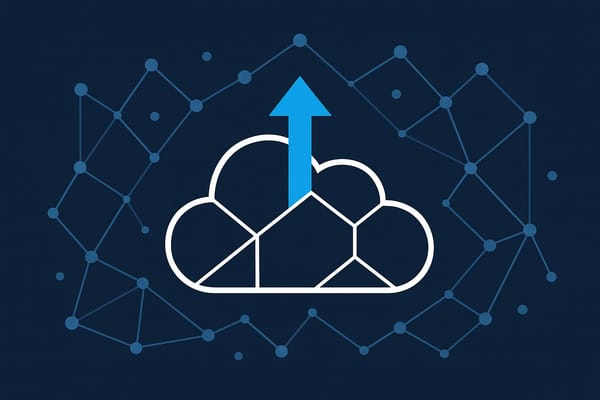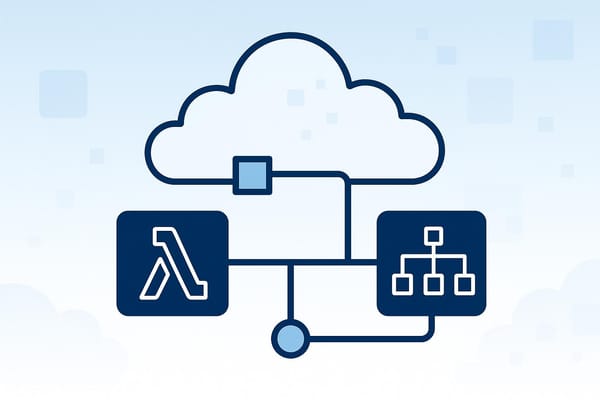IaC Testing Strategies for Small IT Teams
Explore effective IaC testing strategies for small IT teams to manage AWS infrastructure, enhance security, and control costs.
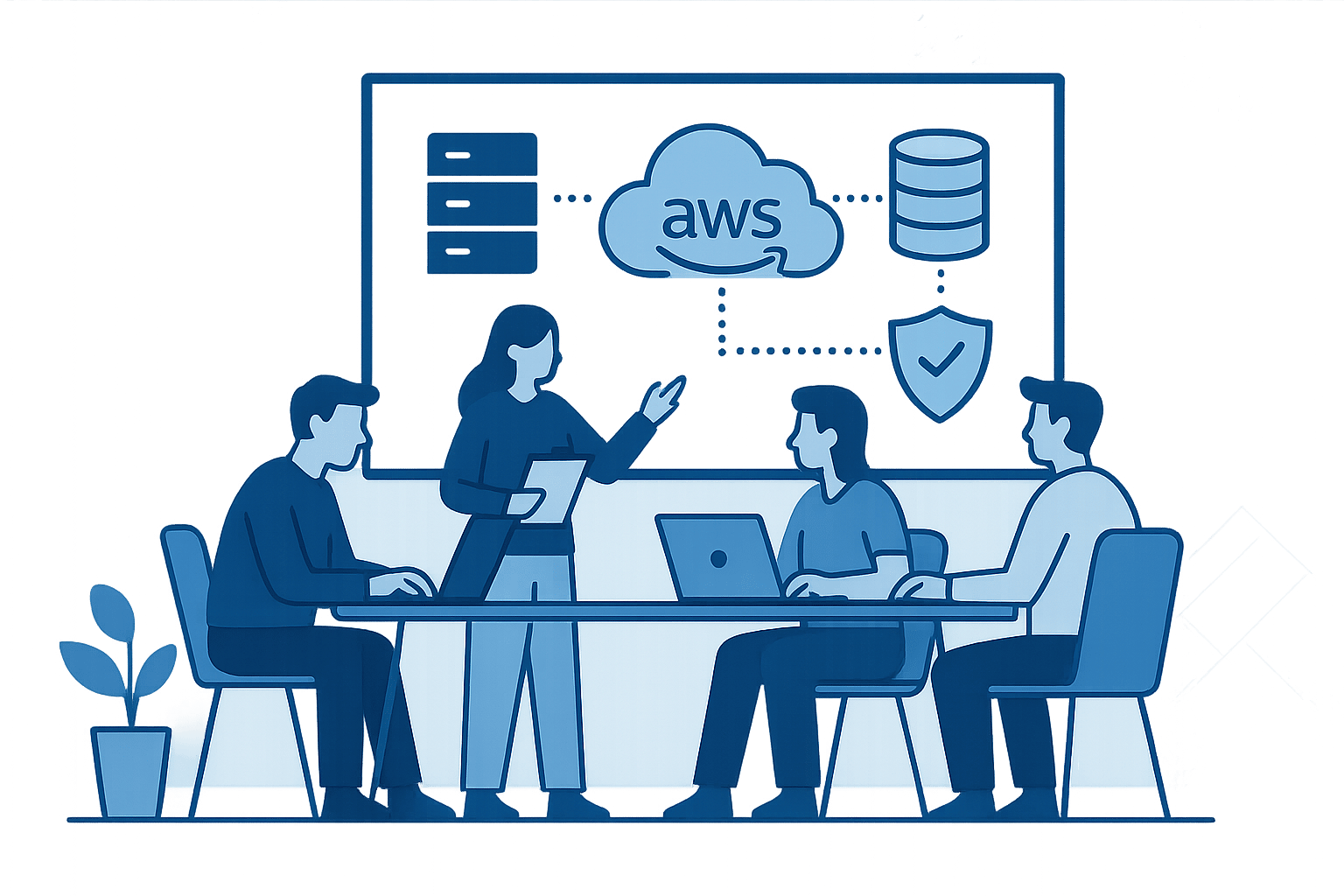
For small IT teams using AWS, Infrastructure as Code (IaC) testing is essential to prevent costly misconfigurations and maintain reliable infrastructure. With limited resources, these teams face challenges like tight budgets, skill gaps, and complex cloud environments. However, effective testing strategies and automation tools can help overcome these hurdles.
Key takeaways:
- Testing Types: Focus on unit, integration, system, and compliance testing to catch issues early.
- Approaches: Use declarative IaC tools like Terraform or AWS CloudFormation for simpler testing and consistent results.
- Tools: Prioritise user-friendly tools like Checkov for security and AWS CodePipeline for automation.
- Automation: Integrate IaC testing into CI/CD pipelines to save time and reduce errors.
- Cost Control: Use AWS features like S3 lifecycle policies, Spot Instances, and budget alerts to manage expenses.
IaC Testing Strategies for Small IT Teams
Main Testing Types for IaC
For small IT teams, a streamlined approach to Infrastructure as Code (IaC) testing is essential. A solid strategy involves focusing on four key testing types, each designed to catch potential issues before they escalate into production problems. It's also important to consider how declarative and imperative IaC approaches influence your testing methods.
Unit testing is the cornerstone of any IaC testing strategy. It focuses on testing individual components or modules in isolation. For example, you might test a security group to ensure it only opens the necessary ports. These tests are quick to run and are excellent at catching syntax errors and logical flaws early in development.
Integration testing evaluates how different infrastructure components interact. For instance, you could check whether EC2 instances can communicate with RDS instances through the correct security group configurations. This type of testing uncovers issues that only arise when multiple components work together.
System testing takes a more comprehensive approach by validating your entire infrastructure as a complete system. It ensures that everything - from network connectivity to security settings and resource dependencies - functions as intended. While system testing can be resource-heavy, it’s invaluable for identifying complex issues in your full environment.
Compliance testing focuses on meeting security standards and regulatory requirements. This is especially critical given the alarming statistic that 10 million hard-coded secrets were detected in public GitHub commits in 2022 - a 67% increase from the previous year.
Declarative vs Imperative IaC Approaches
Understanding the difference between declarative and imperative IaC approaches is crucial when choosing a testing strategy. Declarative IaC defines the desired end state, while imperative IaC outlines the steps needed to achieve that state.
Declarative tools like AWS CloudFormation and Terraform are particularly useful for small teams. They focus on the what rather than the how of infrastructure management. Their idempotent nature ensures that running the same configuration repeatedly produces consistent results. Testing is often simpler with declarative IaC since you can directly compare the intended state with the actual deployment.
In contrast, imperative approaches require specifying the exact sequence of actions to build your infrastructure. While this provides more control, it also complicates testing due to varying initial states and the potential for errors in step-by-step execution.
For small teams, modularisation is a game-changer, regardless of the approach. Breaking infrastructure code into smaller, reusable modules simplifies testing and reduces overall complexity. Modules can be tested individually before being integrated into larger systems. This approach also makes it easier to share code across projects and maintain consistency.
Top Tools for IaC Testing
Choosing the right tools can significantly impact the success of your IaC testing strategy, especially for small teams with limited resources. Here are some standout options tailored to the needs of smaller teams:
- AWS CloudFormation: Ideal for teams already using AWS, it offers seamless integration with AWS services, built-in validation, and rollback features. Its user-friendly design makes it an excellent choice for teams seeking a straightforward solution.
- Terraform: Known for its versatility, Terraform supports multiple cloud platforms, making it a great option for teams planning to expand beyond AWS. While it has a steeper learning curve, its extensive provider ecosystem and strong community support are invaluable for overcoming challenges.
- Checkov: A security-focused tool that scans IaC files for vulnerabilities, compliance issues, and best practice violations. Its rules-based engine and simple syntax make it a popular choice for teams prioritising security.
- Ansible: With its agentless architecture and easy-to-understand YAML syntax, Ansible is a practical choice for small to medium-sized teams. It’s particularly appealing for teams new to IaC due to its gentle learning curve.
- OpenTofu: An open-source alternative to Terraform, OpenTofu offers community-driven development while maintaining compatibility with existing Terraform configurations. This makes it an attractive, budget-friendly option for small teams.
When selecting tools, small teams should prioritise simplicity and ease of use. Tools that integrate seamlessly with existing workflows are often more effective in the long run than overly complex solutions. A straightforward, manageable tool can provide greater value than the most advanced option if it aligns well with the team’s needs and capabilities.
Automating IaC Testing with CI/CD
Adding IaC Testing to CI/CD Pipelines
Integrating Infrastructure as Code (IaC) testing into CI/CD pipelines changes the way small IT teams manage deployments, ensuring every change is automatically validated before it goes live.
To start, test your CI/CD system with a single team before expanding it across the organisation. This trial run helps identify and resolve potential issues without disrupting overall operations.
A good pipeline follows the "fail fast and fix fast" principle. By running unit tests first, you can catch basic configuration errors early. Follow this with integration tests to ensure components interact as expected.
Layered testing is especially useful for smaller teams. This method involves running unit tests, integration tests, and end-to-end tests in stages. Running these tests in parallel saves time while addressing different types of issues at the right stage.
Don’t overlook security. Embed security checks early in the pipeline. This includes scanning for vulnerabilities in dependencies and ensuring no secrets are accidentally exposed in the code. Addressing security upfront prevents problems from escalating into production environments.
By automating these processes, teams can build a strong foundation for leveraging AWS native tools to improve IaC testing further.
AWS Automation Tools
When it comes to IaC testing, AWS offers a suite of native DevOps tools that integrate seamlessly into CI/CD pipelines. These tools are particularly helpful for small teams, offering tighter integration with IAM and VPC compared to many third-party options.
AWS CodePipeline acts as the backbone of automation, managing the build, test, and deployment stages based on predefined workflows. It connects various tools into a cohesive process, making it easier for teams to streamline their development lifecycle.
AWS CodeBuild handles the build and testing phases. As a fully managed service, it compiles code, runs tests, and generates deployment-ready artifacts. Its serverless nature eliminates the need for small teams to manage infrastructure, reducing overhead significantly.
Here’s an example of how CodeBuild can be configured for IaC testing using a buildspec.yml file:
version: 0.2
phases:
install:
runtime-versions:
nodejs: 18
pre_build:
commands:
- echo Installing NPM dependencies
- npm install
build:
commands:
- echo Running Tests
- npm test
AWS CodeDeploy takes care of automating deployments across different environments. It supports deployment strategies like blue/green, in-place, and rolling updates, helping to minimise downtime and reduce risks during updates.
AWS CodeCatalyst offers an all-in-one platform that combines source control, CI/CD, issue tracking, and development environments. Unlike AWS’s modular tools, CodeCatalyst focuses on simplicity, providing a unified experience across the entire development process.
Automation Benefits for Small IT Teams
With AWS’s automation tools, small IT teams gain more than just time savings - they get improved accuracy, better test coverage, and consistent results.
Time savings are immediate. Automated pipelines handle repetitive tasks like running test suites and managing deployments, freeing teams to focus on more strategic work.
Automation also reduces errors by following the same steps every time, ensuring predictable results. This consistency helps maintain high standards, even with limited resources.
Automated pipelines enable broader test coverage, including unit, integration, and end-to-end tests, which would be challenging to achieve manually.
Rollback capabilities are another critical advantage. By implementing strategies like blue/green deployments, teams can quickly revert to a stable state if something goes wrong, avoiding lengthy manual recovery efforts.
Continuous monitoring tools like Amazon CloudWatch provide real-time insights into pipeline performance. This allows teams to identify bottlenecks and improve workflows without dedicating resources to manual monitoring.
Finally, automation helps small teams deliver consistent quality. Test results are easy to read, with failed tests linked to detailed logs, making it simpler to address issues. Regularly updating automated tests ensures they remain reliable as applications evolve, without overburdening the team.
Solutions to Common IaC Testing Problems
Setting Up Lightweight Test Environments
For small IT teams, creating lightweight and cost-efficient test environments can be tricky. One practical solution is to use ephemeral environments - temporary setups that are created on demand and automatically destroyed once testing is complete. This ensures resources are only used when needed, keeping costs in check.
Containerisation is another game-changer. By packaging IaC templates and their dependencies into portable environments, you eliminate the classic "it works on my machine" problem. To avoid resource sprawl, implement an automated "destroy" pipeline that promptly removes outdated environments. This not only keeps your cloud bills under control but also prevents unnecessary clutter.
Breaking complex infrastructures into smaller, independent modules can simplify testing. With modular deployments, you can test individual components without needing to provision the entire environment. Additionally, using a unified deployment pipeline and swapping configuration values via parameters (instead of managing separate codebases) reduces maintenance headaches and ensures your tests closely mirror production conditions.
With these foundations in place, selecting the right tools becomes the next step.
Choosing the Right IaC Testing Tools
Once you’ve set up efficient environments, picking the right tools is essential. Look for tools that are easy to use, integrate well with AWS (if that’s your platform), have strong community support, and don’t break the bank.
- Terraform and SentinelOne are excellent starting points, offering simplicity and robust automation for infrastructure management.
- For teams heavily invested in AWS, AWS CloudFormation is a natural choice, thanks to its seamless integration with AWS services.
- If security is your focus, Checkov offers free, open-source scanning capabilities to validate security configurations. However, since Checkov doesn’t handle provisioning, you may need additional tools to cover the full workflow.
Here’s a quick comparison of popular IaC testing tools:
| Tool | Cost | AWS Integration | Best For | Ease of Use |
|---|---|---|---|---|
| AWS CloudFormation | Free | Native | AWS-only environments | Moderate |
| Terraform | Free (open source) | Excellent | Multi-cloud setups | Moderate |
| Checkov | Free | Good | Security scanning | Low |
| OpenTofu | Free | Good | Community-driven alternative | Moderate |
| Pulumi | Free tier available | Excellent | Developer-friendly workflows | High |
To further enhance your setup, start with Git for version control and integrate automated testing frameworks like JUnit or Jest to streamline your processes.
Improving Test Coverage
Setting up environments and choosing tools is just the beginning - expanding test coverage is crucial for thorough IaC validation. Start small by focusing on non-critical infrastructure components. This helps refine your testing processes before tackling mission-critical systems.
Breaking down complex infrastructure into reusable modules is a smart move. It allows you to test individual components more easily and spot issues faster. A well-rounded testing strategy should include:
- Unit tests to validate single components.
- Integration tests to check how components interact.
- Compliance checks to ensure security and regulatory standards are met.
- Performance tests to verify resource efficiency.
Version control plays a vital role here. Storing all IaC templates in Git repositories ensures you can track changes, roll back updates if needed, and maintain consistency across versions.
Finally, incorporate security scanning tools like Checkov and TFLint into your CI/CD pipeline. This step helps catch misconfigurations early, preventing them from reaching production and causing bigger problems down the line.
Best Practices and Cost Control for IaC Testing
IaC Testing Best Practices
Reliable Infrastructure as Code (IaC) testing starts with solid practices. One key approach is to automate individual infrastructure components and store templates in Git. This setup makes it easier to track changes, undo mistakes, and minimise configuration issues.
Automation should be your go-to wherever feasible. Organisations adopting IaC report a 50% drop in configuration errors and a 60% reduction in deployment failures. By setting up dedicated testing environments or accounts, you can repeatedly deploy, test, and tear down infrastructure without risk.
As your infrastructure grows, keeping track of its state and using drift detection ensures that resources stay aligned with your defined templates. Breaking down complex setups into smaller, independent modules - known as modularisation - makes testing simpler and promotes reusability across different projects.
On top of improving reliability, these practices can also save money. In fact, adopting IaC has been shown to cut operational costs by up to 30%.
AWS Cost-Saving Tips for Small Teams
Cloud budgets often leak money - companies waste around 35% of their cloud spend on average. With proper management, this waste can be reduced to 15%, but without optimisation strategies, it can soar to 55%.
"AWS cost optimisation is a continuous, engineering‑led discipline that emphasises planning, measuring, and refining cloud spend in every sprint." – Wiz
To manage costs effectively, tag all resources and assign clear ownership. This helps track spending accurately. Regularly review resource usage and right-size your infrastructure by adjusting capacity to meet actual needs. For predictable workloads, consider using Amazon's Savings Plans, Spot Instances, or Reserved Instances to cut costs significantly.
Idle resources can be a major drain. Automate the cleanup of unused items like unattached EBS volumes or unused Elastic IPs. For non-production environments, schedule EC2 instances to automatically shut down during off-hours to avoid unnecessary costs. These simple measures can directly lower your AWS bills.
When it comes to storage, use S3 lifecycle policies to move infrequently accessed data into cheaper storage tiers. S3 Intelligent-Tiering is another great option for handling variable access patterns. Additionally, set up snapshot lifecycle policies with Amazon Data Lifecycle Manager. Upgrading from gp2 to gp3 EBS volumes can also save money, while AWS Lambda functions powered by Graviton2 deliver up to 19% better performance at 20% lower costs.
To keep costs in check, integrate budget alerts into your CI/CD pipelines using IaC. This way, you can catch potential overspending before it becomes an issue. Real-time alerts for unexpected cost spikes add another layer of protection.
Additional Guidance and Expert Resources
Effective IaC testing and AWS cost management depend on continuous monitoring and refinement. For small teams aiming to fine-tune their AWS strategies, the AWS Optimization Tips, Costs & Best Practices for Small and Medium sized businesses blog is a valuable resource. Managed by Critical Cloud, it covers topics like cost optimisation, cloud architecture, security, performance, migration, and automation, all tailored to help smaller organisations scale efficiently.
Tools like AWS Cost Explorer, Compute Optimizer, and Trusted Advisor are essential for tracking spending patterns and identifying areas for improvement. Beyond saving money, smart cost management ensures your infrastructure runs smoothly while maintaining the testing coverage needed for dependable deployments.
Conclusion: Main Points for Small IT Teams
IaC Testing Strategies Summary
IaC testing plays a crucial role in ensuring your infrastructure code performs as expected before deployment. For small IT teams, this means applying the same level of care to IaC files as you would to enterprise applications. This includes using proper version control systems, defining clear pass-or-fail test conditions, and automating dependency tracking to avoid configuration drift. Keep a record of test results to make troubleshooting easier and outcomes more transparent. Start with straightforward improvements, like refining storage and certificate management, before tackling more advanced testing methods.
By combining robust IaC testing with efficient cost management, small teams can make the most of their AWS resources.
AWS Optimisation for SMBs
While thorough IaC testing secures smooth deployments, disciplined cost management ensures your operations remain sustainable. Effective management of AWS resources can result in substantial savings. Research shows that companies waste about 35% of their cloud budgets, but with proper oversight, this waste can be reduced to 15%. For small teams, this reduction can translate into significant annual savings in pounds. For example, in 2015, Mikatasa, a family-owned business in Indonesia, transitioned to AWS Cloud and cut their total cost of ownership by 30%, while halving the size of their ERP maintenance team. Similarly, Comply, a compliance software provider, saved over £370,000 after consolidating three AWS environments with the help of AWS experts.
Incorporating financial awareness into your development processes is another key step. Adding cost checks to CI/CD pipelines with IaC can flag potential budget issues before they escalate. Assigning cost accountability across teams - engineering, platform, finance, and security - ensures a shared responsibility for optimising AWS usage. Tools such as AWS Cost Explorer, Compute Optimizer, and Trusted Advisor provide the visibility needed to make informed decisions, while features like Spot Instances can offer savings of up to 90% compared to on-demand pricing.
For further tips and actionable advice, the AWS Optimization Tips, Costs & Best Practices for Small and Medium sized businesses blog is a valuable resource. It’s designed to help smaller organisations navigate AWS optimisation while maintaining strong IaC testing practices.
FAQs
What are effective strategies for small IT teams to test Infrastructure as Code (IaC) with limited resources?
Small IT teams can simplify Infrastructure as Code (IaC) testing by leveraging automated testing tools like Test Kitchen, Terratest, or InSpec. These tools are designed to validate configurations before deployment, helping to spot potential issues early. This not only ensures better code quality but also saves valuable time and effort.
To work more efficiently, teams can adopt shared modules to reduce redundancy, implement version control for tracking changes, and establish dedicated testing environments or accounts for regular testing. This setup makes it easier to identify configuration drift and maintain dependable workflows without straining limited resources.
By following these practices, teams can enhance the reliability of their code while preparing for growth, making it easier to scale their infrastructure confidently and effectively.
What benefits do small IT teams gain from using declarative IaC tools like Terraform and AWS CloudFormation?
Declarative Infrastructure as Code Tools: A Boost for Small IT Teams
Tools like Terraform and AWS CloudFormation bring a lot to the table for small IT teams. They automate the process of deploying infrastructure, ensuring everything stays consistent and minimising the risk of manual errors - a real lifesaver when resources are tight.
One standout feature is idempotency, which means you can recreate or update your infrastructure without worrying about unexpected hiccups. This makes managing systems smoother, speeds up deployment times, and frees up your team to tackle more strategic work instead of getting bogged down in repetitive setup tasks.
How can small IT teams effectively test IaC templates on AWS while keeping costs under control?
Small IT teams can simplify Infrastructure as Code (IaC) testing on AWS without breaking the bank by adopting smart, cost-conscious strategies. A good starting point is to organise your IaC templates in a way that encourages reuse and adaptability, cutting down on duplication and reducing the time spent on maintenance.
For testing, consider using lightweight options like AWS Fargate for container-based workloads or fine-tuning your EC2 instance usage to avoid unnecessary expenses. These small adjustments can make a big difference in keeping costs under control.
To stay on track, automate cost reviews and regularly assess your IaC security tools. This ensures your testing remains both efficient and secure. By finding the right balance between thorough testing and ongoing cost management, small teams can deliver reliable infrastructure while sticking to their budgets.
